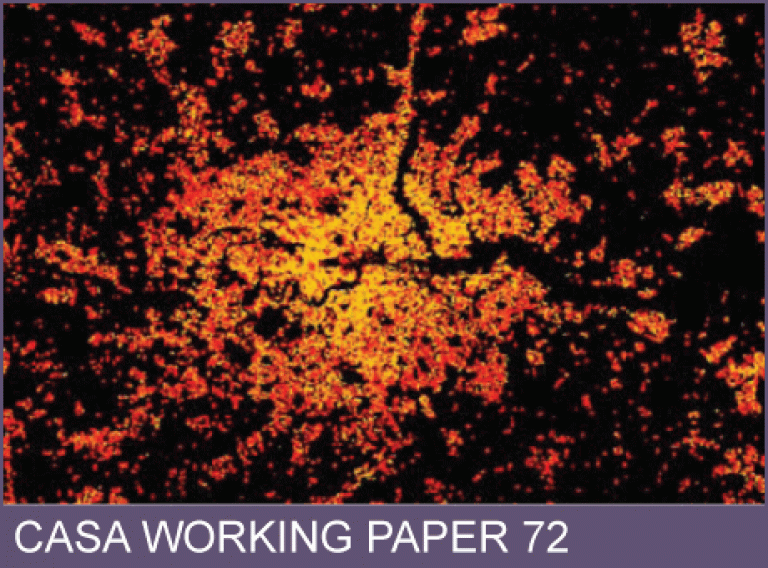CASA Working Paper 72

1 February 2004
Cities: Continuity, Transformation, and Emergence
Cities can be regarded as the quintessential example of complexity. Insofar as we can define a hidden hand determining their morphology, this is based on the glue that stitches together the actions of individuals and organizations who build the city from the ground-up, so-to-speak. When general systems theory entered the lexicon of science in the mid- 20th century, cities were regarded as being excellent examples of systems with interactions between basic elements that demonstrated the slogan of the field: the 'whole is greater than the sum of the parts'. Since then, as complexity theory has evolved to embrace systems theory and as temporal dynamics has come onto the agenda, cities once again have been used to illustrate basic themes: global organization from local action, emergent morphology from simple spatial decision, temporal order at global levels from volatile, seemingly random change at the level of individual decision-making, evolution and progress through coevolution, competition, and endless variety.
Here we will sketch these ideas with respect to cities illustrating particularly three key ideas which involve the tension between continuously changing systems, qualitative transformations, and radical change based on emergent properties of the whole. Our analysis has many implications for a new theory of urban planning which is built from the bottom up, rather than from the top down which is the traditional way in which such interventions are currently carried out in the name of making better cities. Contemporary problems such as ethnic segregation, urban sprawl, traffic congestion, urban decline, and regeneration are all informed by the perspective on complexity theory that we bring to bear here.
This working paper is available as a PDF. The file size is 802KB.
Authors: Michael Batty, Sinesio Alves Junior, Joana Barros
Publication Date: 1/2/2004
 Close
Close

